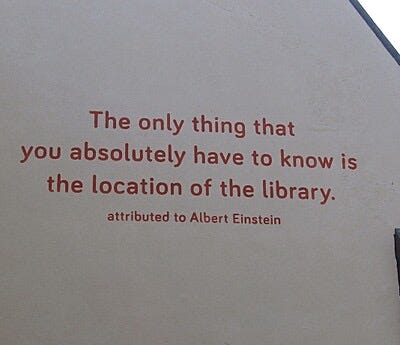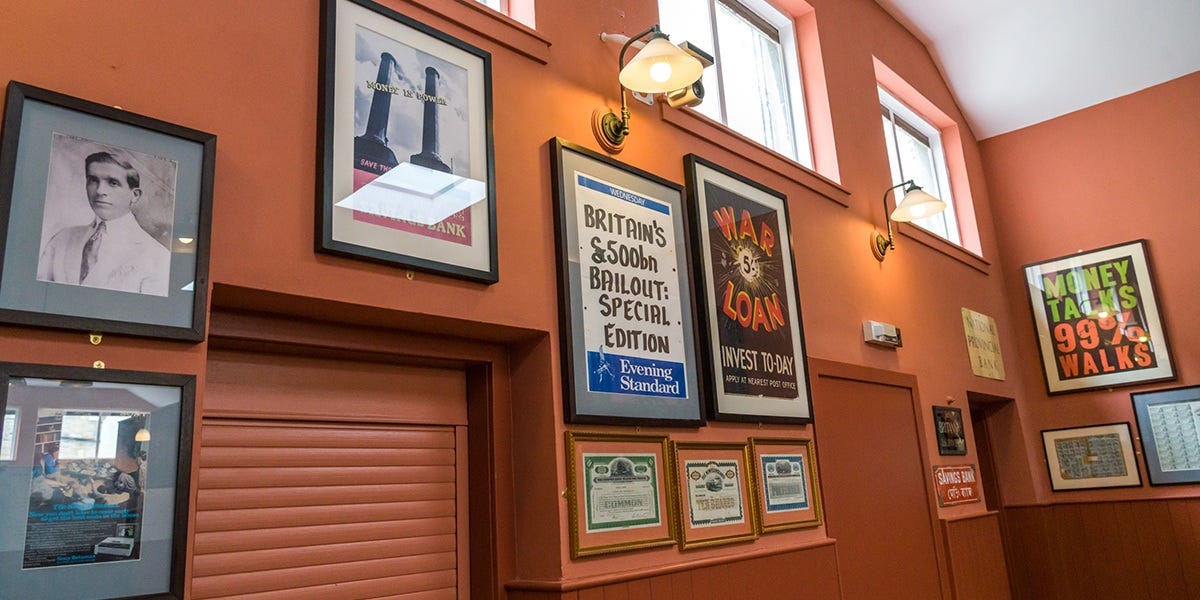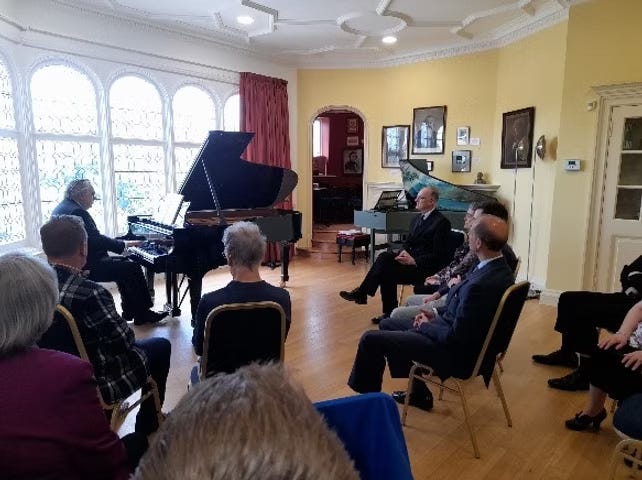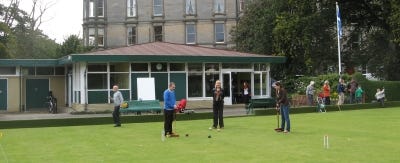Inside the Library of Mistakes
The Capital's unique showcase of financial disasters and other Doors Open Day highlights
The Library of Mistakes takes you by surprise.
It is almost as if its very existence in a quiet, West End back lane might be an error in itself. But walk down the cobbled Melville Street Lane and it is there.
Just when you expect to see nothing more than secure parking for two or three of the sports cars and four-wheel drives of the area’s well-heeled residents. Or perhaps the warehouse premises of an independent wine merchant, a secret except to ‘in the know’.
The library proclaims itself, well, unmistakably.
“The only thing that you absolutely have to know is the location of the library.”
The words, attributed to Albert Einstein, are written in neat red letters on the white wall.
Beside it, in case you are still in any doubt, is the sign. Written in smaller, understated type: The Library of Mistakes.
If you are not intrigued by now, then you are probably, to borrow Samuel Johnson’s words, tired of life.
What lies within?
Step inside, and the Library does not disappoint.
It’s a beautiful space. It’s wood-panelled walls lined with thousands of books about financial crashes and scandals, with spiral staircases leading upwards to more.
A wall of exhibits and an eclectic collection of mementoes recall some of the biggest financial disasters of the last century or so.
There’s a framed picture of Charles Ponzi, the Italian con artist whose name is now synonymous with scams; and a shirt signed by the original ‘rogue trader’, Nick Leeson, whose £800 million losses bankrupted the Queen’s bank Barings. A Laker Airways pilot’s cap represents the pioneering budget airline which made trans-Atlantic flights affordable to the masses before spectacularly collapsing in the 1980s.
Closer to home, a newspaper billboard conjures up memories of the 2008 financial crash, so many of whose central figures - Fred Goodwin, Gordon Brown and Alistair Darling - called Edinburgh home.
Deliciously, there is an empty space in the collection, which used to be filled by an empty beer can. The FTX beer promoted the brand of former ‘crypto king’ Sam Bankman-Fried, who is currently serving a 25-year prison sentence for fraud in the US.
A cleaner apparently threw the can out, thinking it was rubbish. So, the Library of Mistakes is not immune from errors itself, although at least it was nowhere near as costly as the ones it reminds us about.
A mission to learn from history
Behind the flair for entertainment, the library has a serious purpose. It was founded in 2014 by Professor Russell Napier, a former Baillie Gifford investment manager with a deep understanding of financial history and an evident genius for marketing.
What made his name was writing a book on financial history, entitled Anatomy of the Bear: Lessons from Wall Street’s four great bottoms.
The book made a ripple when it was published, but after 2008 people started to notice how many of the lessons it laid out had been ignored by key organisations in the banking crisis.
“One of the things we are trying to do is get people to think differently about the mistakes that keep occurring,” says librarian Dr Helen Williams, who curates the more than 5000 books on its shelves.
“The core of our collection is in sections called financial institutions, banking and financial markets. So, financial institutions is books on banks, some you may never have heard of and some of the really big ones you will know about - the Bank of Scotland, the Royal Bank of Scotland, but also the City of Glasgow Bank and the Ayrshire Bank.”
The collection is, unsurprisingly, strong on Scottish banks, but has a global perspective, with a focus on how financial markets work and what their repeated cycles of ‘boom and bust’ teach us.
“We have books going right the way back to the Darien scheme and the South Sea bubble of the 18th century and coming right up to the great financial crisis of 2008,” she explains in her introductory talk.
There are books on business mistakes, covering famous names such as Microsoft, Samsung and Guinness, as well as corporate giants who have disappeared, such as ICI. The collection covers accounting, auditing, risk and decision-making. It also covers environmental disasters, including the Exxon Valdez oil spill, and fraud, charting the downfall of the Maxwell empire.
Run by the Didasko education charity, the library runs courses on financial history education and a self-guided walking tour of Edinburgh’s financial past featuring acclaimed comedian Susan Morrison, as well as being a free-to-use study resource.
It’s key aim seems modest, learning the lessons of history - but you don’t have to be a student of the financial markets to know that isn’t something we have excelled at to date.
As far as we can tell, 49-day Prime Minister Liz Truss has never been to the library, but her Chancellor Kwasi Kwarteng has been a guest.
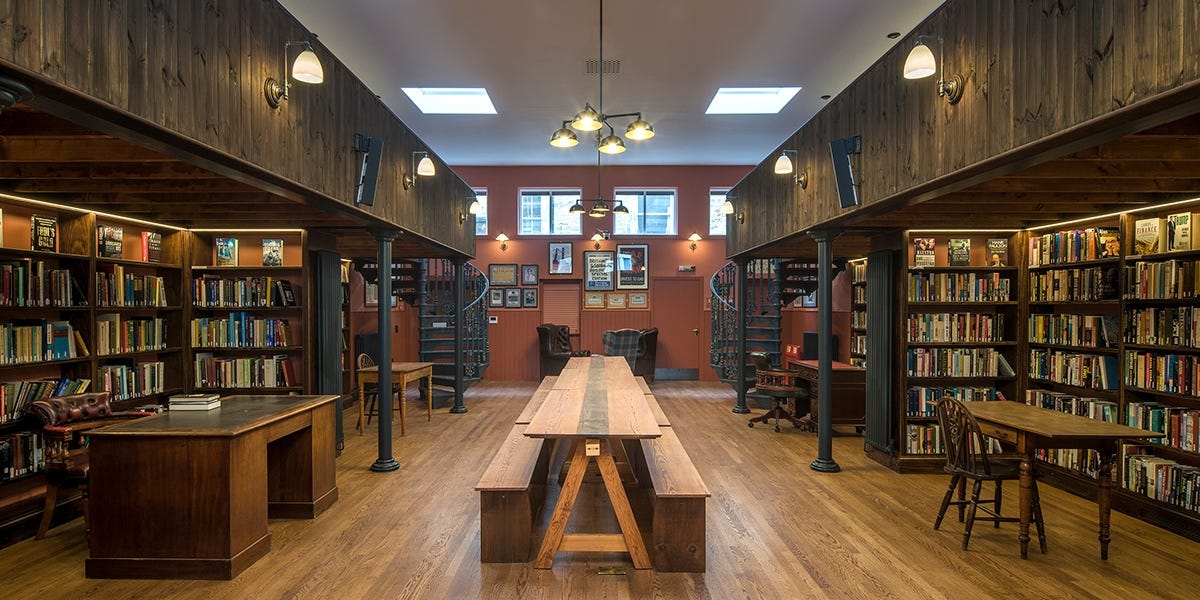
Staying in tune
In a modest house in Dean Village, you will find Scotland’s oldest surviving musical society.
Each Saturday evening from October to June, the Edinburgh Society of Musicians gathers to hear performances in its intimate upstairs concert room.
Founded by a group of professional Victorian musicians, the society was revolutionary when it first met. Being musician-led, it was was strikingly different from the then firmly established Edinburgh Musical Society, which was run by wealthy patrons of the arts.
Membership of the society remains restricted to composers and performers, although its concerts, featuring Scotland’s leading chamber musicians and international guests, are open to the public.
Anyone for croquet?
Nothing stays still for long in Edinburgh. As the Millennium dawned, demand for the bowling greens on the edge of the Meadows was dwindling. The greens were about to get a fresh lease of life from a perhaps unexpected quarter.
Penicuik’s Bush Croquet Club took a leap of faith, with the backing of a National Lottery grant, to take on the grounds. Today, the Meadows is the thriving home of the sport in Scotland, as the National Croquet Centre.
As well as club, national and international croquet competitions, the club also continues to host lawn bowls, with the greens retaining the ability to switch between sports.
Doors Open Day takes place in Edinburgh and East Lothian on the weekend of 27-28 September. You can find details of the Edinburgh buildings taking part here and the East Lothian ones here. Midlothian Doors Open Day is on Saturday, 13 September, and in West Lothian it is on 20-21 September.
If we haven’t whetted your appetite yet, then these articles from our archive with connections to some of the buildings which are opening their doors might inspire you.
Museum of Scottish Fire Heritage: ‘On fire from top to bottom, vomiting out flames like a volcano’
Grange Cemetery: The Egyptian Portal to the Land of the Dead
Royal Observatory: ‘If you can’t solve a problem, build a bigger telescope’
Out of the Blue Drill Hall: Nothing but three young women and an idea
Corstorphine Tower, Edinburgh Open Workshop, Gracemount Mansion and Granton Walled Garden (the Anatomical Museum has other open days this year): The most incredible city museum you’ve never visited
National Library of Scotland (George IV Bridge and Causewayside): ‘Everyone should be able to sit with the genius of humanity’
Lothian Buses: Is bus travel in Edinburgh’s fast lane to a greener destination?
Custom House, Leith: Creating Scotland’s first fully-digital museum on Leith’s Shore
National Galleries of Scotland - Granton Art Centre: Edinburgh’s answer to the ‘revolutionary’ V&A Storehouse stalls



